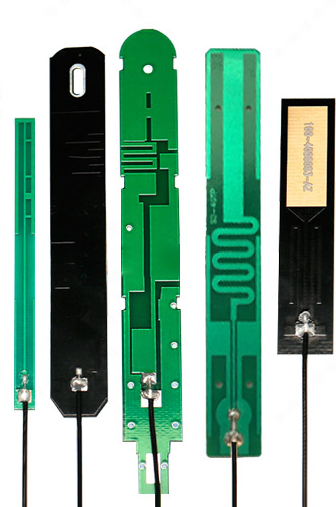The Use of Omnidirectional PCB Antennas
Introduction
With the increasing demand for wireless communication applications, the design of compact and efficient antennas has become a critical research area. In recent years, the full omnidirectional printed circuit board (PCB) antenna has emerged as a popular solution to the challenge of designing antennas with desirable radiation properties for wireless communication systems. This paper will focus on the use of full omnidirectional PCB antennas and their applications in wireless communication systems.

Full Omnidirectional PCB Antennas
A full omnidirectional PCB antenna is a type of antenna that radiates electromagnetic waves uniformly in all directions. It is designed to provide a consistent level of radiation in every azimuthal direction, making it an ideal choice when the antenna needs to be mounted on a moving platform such as a vehicle or a drone. The full omnidirectional PCB antenna has a simple structure and is easy to fabricate, which makes it a popular choice in low-cost wireless applications.
The full omnidirectional PCB antenna can be classified into two types: balanced and unbalanced antennas. Balanced antennas have a balanced structure with equal currents and voltages on both sides of the antenna. Unbalanced antennas have an asymmetrical structure with unequal currents and voltages on both sides of the antenna. Balanced antennas are more commonly used in wireless communication systems due to their superior radiation efficiency compared to unbalanced antennas.
Design of Full Omnidirectional PCB Antennas
The design of full omnidirectional PCB antennas involves several key parameters that affect the overall performance of the antenna. These parameters include the antenna size, the number of radiating elements, and the feeding mechanism. The antenna size determines the operating frequency range, which is usually between 2.4 GHz and 5.8 GHz for wireless communication applications. The number of radiating elements determines the gain and radiation pattern of the antenna. The feeding mechanism determines the radiation efficiency and impedance matching of the antenna.
Several techniques are used to optimize the design of full omnidirectional PCB antennas. These techniques include adjusting the length and width of the radiating elements, changing the spacing between the radiating elements, adding a ground plane, and using different feeding mechanisms.
Applications of Full Omnidirectional PCB Antennas
Full omnidirectional PCB antennas are widely used in various wireless communication systems such as wireless local area networks (WLANs), radio frequency identification (RFID), and mobile communication systems. They are especially useful when the antenna needs to be mounted on a moving platform or when the antenna needs to provide a consistent level of radiation in all azimuthal directions.
Conclusion
Full omnidirectional PCB antennas are a popular choice for designing antennas with desirable radiation properties for wireless communication systems. They have a simple structure and are easy to fabricate, making them a popular choice in low-cost wireless applications. The design of full omnidirectional PCB antennas involves several key parameters that affect the overall performance of the antenna. These parameters include the antenna size, the number of radiating elements, and the feeding mechanism. Full omnidirectional PCB antennas are widely used in various wireless communication systems such as WLANs, RFID, and mobile communication systems.





